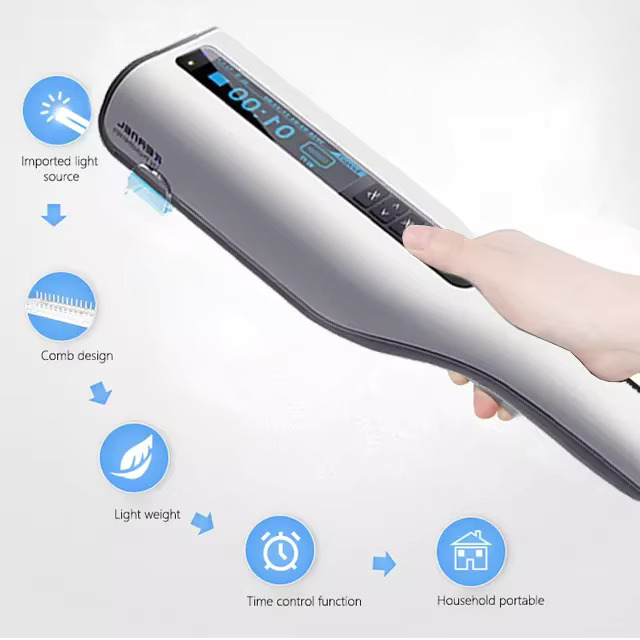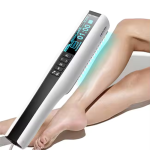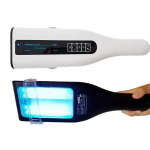Narrowband UVB phototherapy is a well-established treatment option for various dermatological conditions such as psoriasis, eczema, and vitiligo. Traditionally administered in clinical settings, this therapy involves the controlled exposure of the skin to ultraviolet B light, specifically at a wavelength of approximately 311-313 nanometers. However, the growing interest in home-based therapies has led to the development of narrowband UVB devices suitable for personal use. This shift towards home phototherapy presents several advantages, including convenience and cost-effectiveness, and empowers patients with more control over their treatment schedules.
Benefits of Home Narrowband UVB Phototherapy
- Convenience and Flexibility: One of the primary benefits of home phototherapy is the ability to schedule treatment sessions at one’s own convenience. Patients no longer have to commute to clinics, arrange for time off work, or accommodate their treatment around rigid clinic hours. This flexibility can improve adherence to treatment schedules, potentially leading to better outcomes.
- Cost-Effective: Over time, the cumulative expenses of frequent clinic visits can be substantial. While the initial investment in a home phototherapy unit may seem significant, it often proves to be more economical in the long run. Patients save on travel and consultation costs, enhancing affordability.
- Improved Access to Care: For individuals living in rural or remote areas, accessing specialized dermatology care can be challenging. Home phototherapy improves accessibility by bringing treatment directly to the patient, reducing disparities in healthcare access caused by geographical barriers.
- Privacy and Comfort: The home environment offers a level of privacy and comfort that cannot be duplicated at a clinic. Patients may feel more relaxed and at ease when undergoing treatment in their own space, potentially enhancing the experience and reducing stress.
Feasibility of Home Phototherapy
Implementing home phototherapy requires some careful considerations to ensure safety and effectiveness. Here’s a closer look at the factors contributing to the feasibility of this treatment option:
- Device Selection: Choosing the right narrowband UVB device is crucial. Patients should consult with their dermatologists to select a device that suits their specific condition and skin type. Devices vary in size, from handheld units for targeted treatment to larger panels for full-body exposure.
- Training and Education: Proper training on the use of phototherapy devices is essential. Dermatologists or trained medical professionals should provide comprehensive instructions on operating the device, setting the correct dosage, and identifying any adverse reactions.
- Safety Protocols: While narrowband UVB phototherapy is generally considered safe, it’s essential to adhere strictly to safety guidelines to prevent burns and other side effects. Patients should maintain a treatment diary, wear protective goggles, and regularly monitor their skin’s response to therapy.
- Regular Dermatological Supervision: Even with home-based treatments, continued supervision by a dermatologist is crucial. Regular consultations help assess treatment efficacy, adjust dosages if needed, and address any concerns or complications.
Patient Experiences and Testimonials
Many individuals have shared positive experiences with home phototherapy, highlighting the transformative effects it can have:
- Sarah’s Story: Sarah, who has been battling psoriasis for over a decade, found clinic visits increasingly burdensome due to her work schedule. Since switching to a home narrowband UVB device, she reports significant improvements in her condition with the added benefit of treatment at her convenience.
- John’s Adventure with Eczema: John struggled with managing his condition due to the lack of accessible dermatology services in his area. Upon acquiring a home phototherapy unit, he not only achieved better control over his eczema flare-ups but also gained a sense of empowerment in his treatment journey.
Challenges and Considerations
While home phototherapy offers numerous advantages, it’s not without challenges:
- Initial Setup Cost: The initial expenditure for a home phototherapy device can be a barrier for some patients. Exploring insurance coverage and financing options may assist in mitigating upfront costs.
- Space Requirements: Some devices require adequate space for setup and proper usage. Patients need to ensure their home environment can accommodate the device, particularly if using larger units designed for full-body exposure.
- Self-Discipline and Commitment: Success with home phototherapy relies heavily on patient commitment and discipline. Adhering to prescribed treatment schedules and techniques without direct supervision requires a proactive approach.
Frequently Asked Questions (FAQ)
Q1: Is home narrowband UVB phototherapy as effective as in-clinic treatment?
A1: Home phototherapy can be as effective as in-clinic treatment when patients meticulously follow prescribed guidelines and maintain regular dermatological consultations to monitor progress and adjust treatment if necessary.
Q2: How do I know if home phototherapy is suitable for me?
A2: Suitability depends on various factors, including the specific skin condition, its severity, patient’s lifestyle, and ability to adhere to treatment protocols. It is crucial to consult with a healthcare professional for personalized recommendations.
Q3: What are the potential side effects of home phototherapy?
A3: Potential side effects include skin redness, itching, or dryness, similar to sunburn. Adhering to safety guidelines and not exceeding recommended dosages can help minimize these effects. Always contact a dermatologist if severe reactions occur.
Q4: How often should I use the home phototherapy device?
A4: Treatment frequency varies depending on the individual case and severity of the condition. A typical regimen might involve multiple sessions per week, with specific timelines recommended by a dermatologist.
Q5: Are there any specific precautions I need to take when using home phototherapy?
A5: Important precautions include wearing provided protective eyewear, adhering to session durations, and keeping a detailed record of treatments to avoid overexposure.
Conclusion
Home narrowband UVB phototherapy represents a revolutionary move toward patient-centered care, offering flexibility, cost efficiency, and enhanced access for those managing chronic skin conditions. While promising, this treatment approach requires careful device selection, patient education, and ongoing medical supervision. By embracing these therapies responsibly, patients can effectively incorporate them into their skincare regimens, experiencing improved outcomes while maintaining the desired autonomy over their health. As technology advances, home phototherapy options will likely continue to evolve, providing even greater opportunities for effective treatment in the comfort of home environments.

Silvia Malgot is a renowned author and expert in the fields of skincare and beauty, with over a decade of experience researching and writing about effective treatments, holistic approaches, and innovative technologies. Her passion for empowering individuals to feel confident in their own skin has driven her to explore cutting-edge solutions and timeless traditions in skincare.
Silvia has contributed to several leading health and beauty publications, providing insights into trends, product recommendations, and practical advice grounded in science. Her approachable yet detail-oriented style has made her a trusted voice for readers seeking clarity in an overwhelming industry. When she’s not writing, Silvia actively participates in workshops and seminars, sharing her knowledge and inspiring others to prioritize self-care through sustainable, informed practices.


